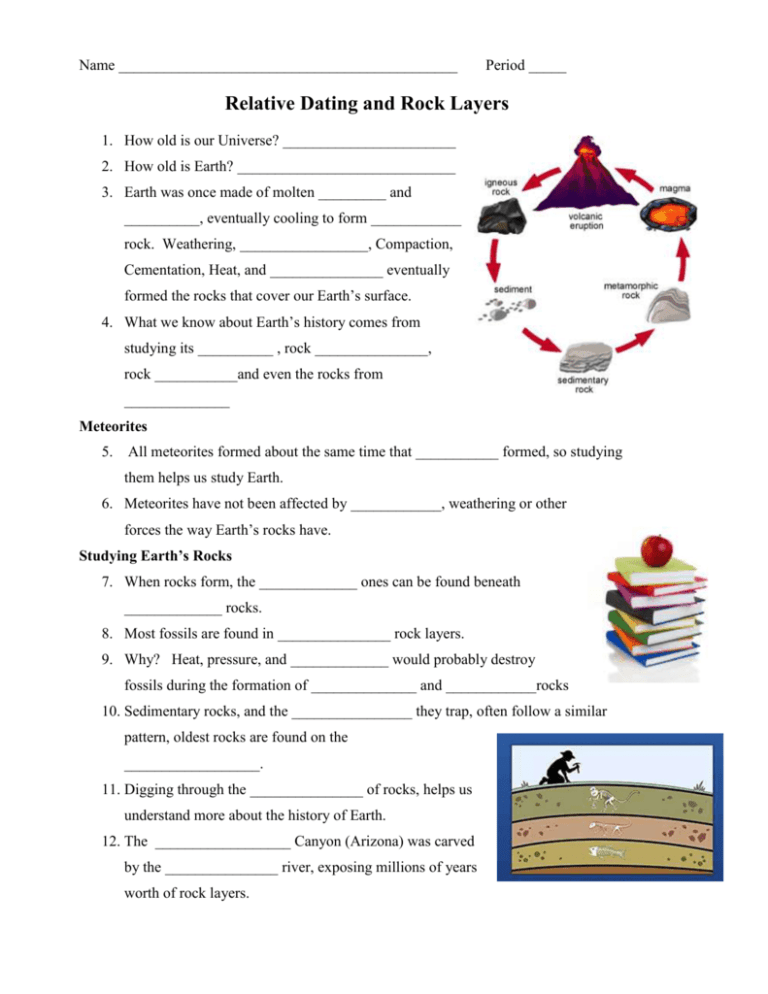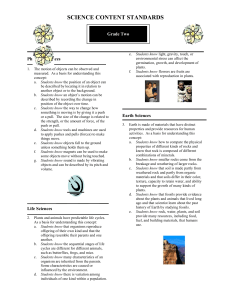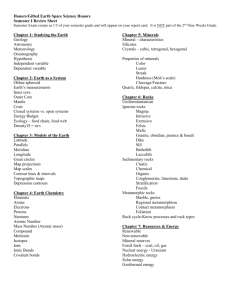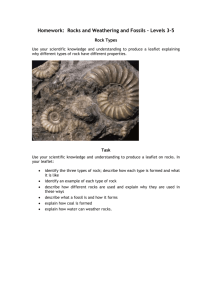Name
advertisement

Name _____________________________________________ Period _____ Relative Dating and Rock Layers 1. How old is our Universe? _______________________ 2. How old is Earth? _____________________________ 3. Earth was once made of molten _________ and __________, eventually cooling to form ____________ rock. Weathering, _________________, Compaction, Cementation, Heat, and _______________ eventually formed the rocks that cover our Earth’s surface. 4. What we know about Earth’s history comes from studying its __________ , rock _______________, rock ___________and even the rocks from ______________ Meteorites 5. All meteorites formed about the same time that ___________ formed, so studying them helps us study Earth. 6. Meteorites have not been affected by ____________, weathering or other forces the way Earth’s rocks have. Studying Earth’s Rocks 7. When rocks form, the _____________ ones can be found beneath _____________ rocks. 8. Most fossils are found in _______________ rock layers. 9. Why? Heat, pressure, and _____________ would probably destroy fossils during the formation of ______________ and ____________rocks 10. Sedimentary rocks, and the ________________ they trap, often follow a similar pattern, oldest rocks are found on the __________________. 11. Digging through the _______________ of rocks, helps us understand more about the history of Earth. 12. The __________________ Canyon (Arizona) was carved by the _______________ river, exposing millions of years worth of rock layers. 13. Sometimes, the rock layers aren’t always ___________________ 14. And sometimes _____________ fossils are found high in the ____________________ 15. Turns out, our Earth’s surface is constantly ____________, changing, and _______________________ and the layers get _________________ around. 16. Only in the last ____________ years, have we begun to understand the structure formation and _______________ of our Earth. To figure out the ages of rocks and their fossils, ______________ rely on a few rules… Law of Superposition In any undisturbed rock, the _________________ layer is at the bottom and the _____________________ layer is at the top. The Cross Cutting Law Any feature that ___________ _________________ a body of rock is ______________ than the body of sediment or rock it cuts across. The Law of Inclusions If one rock layer contains _________________ (inclusions) of another rock layer, it must be _______________________ than the fragments of rocks it contains.







